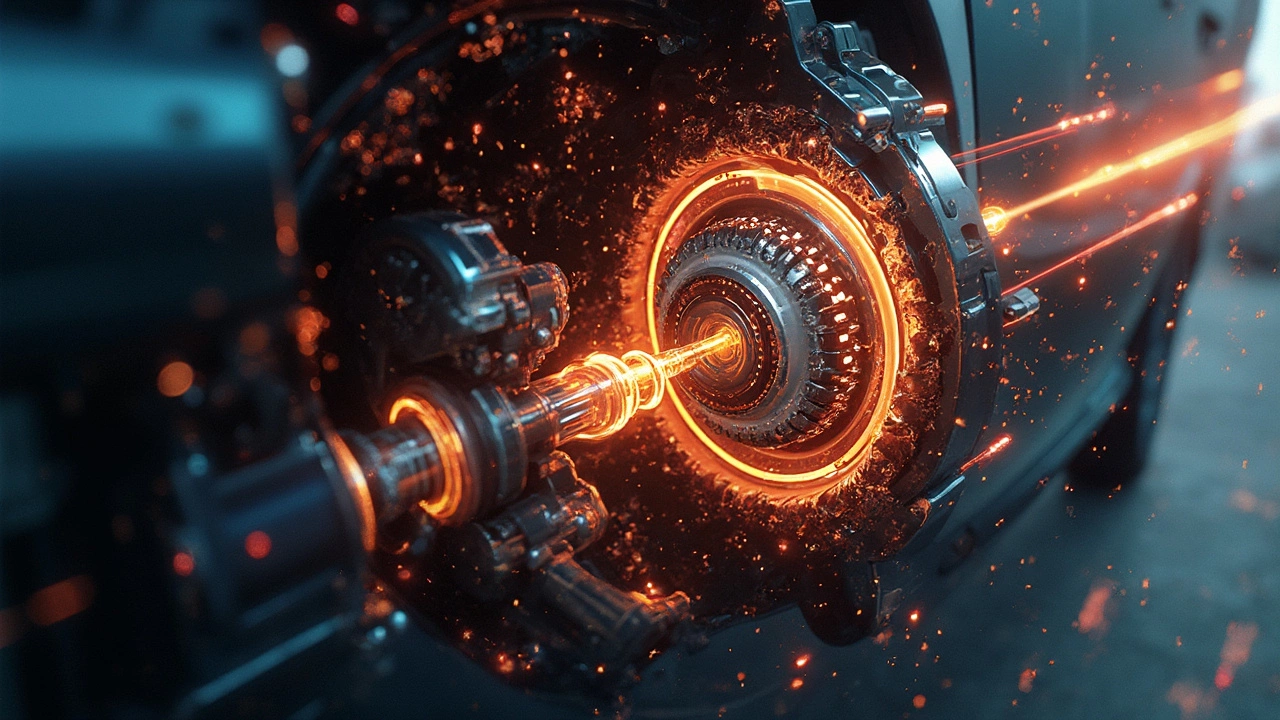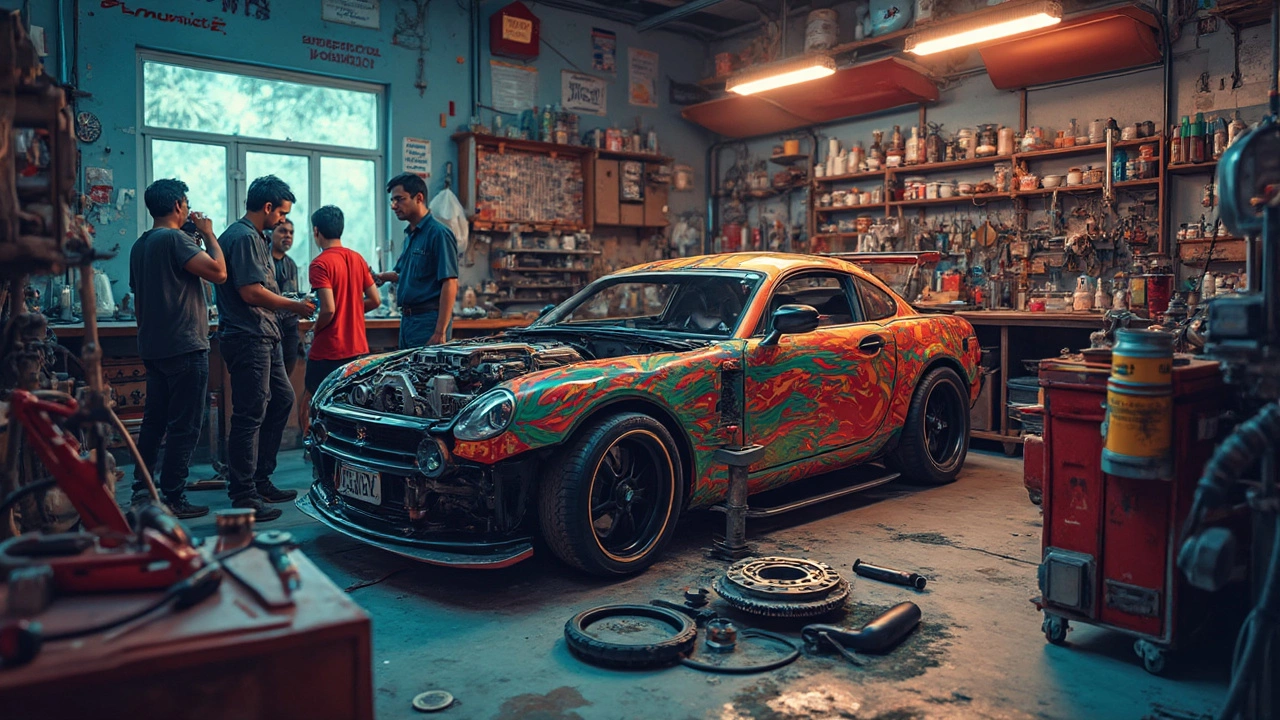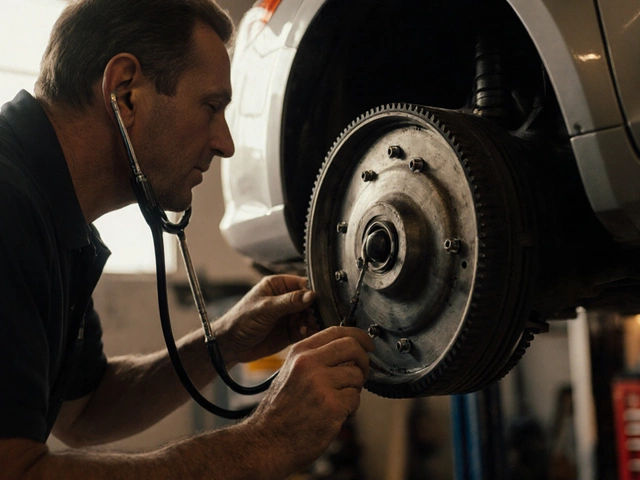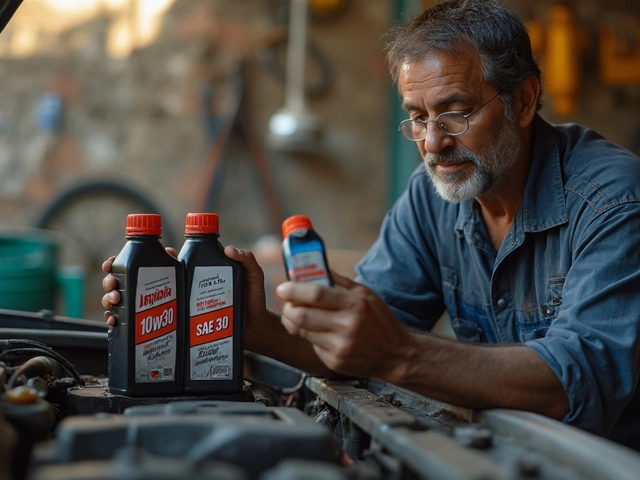If you’re thinking about squeezing more power out of your car, sooner or later you’ll bump into the topic of clutches—and especially if you’re considering a stage 2. Everyone wants to know: how much horsepower can a stage 2 clutch really take before it starts slipping or worse?
The short answer? Most stage 2 clutches are built to handle between 300 and 450 horsepower. But here’s the thing—not all clutch kits are created equal, and a big chunk of this rating depends on the brand, the quality of the friction material, and (this might surprise you) torque. Not every clutch in the same 'stage' has the same rating. Always check the specs for your exact kit, because some can handle even more with upgraded pressure plates.
Before you throw bigger turbos or a nitrous kit at your engine, it pays to know if your clutch will keep up. Burning out a stage 2 clutch can get expensive fast, especially if you've cut corners on installation or picked a kit meant more for daily driving than hard launches. Too many guys ruin their clutch at the drag strip and act like it's the clutch's fault, but there’s way more to the story.
- What Exactly Is a Stage 2 Clutch?
- Horsepower Ratings: The Real Numbers
- Why Torque Matters More Than HP
- Upgrades and Wear: What Kills a Clutch Fast
- Tips to Make Your Clutch Last
- Myths People Still Believe
What Exactly Is a Stage 2 Clutch?
“Stage 2 clutch” sounds pretty technical, but it’s basically just the second step up from stock when you’re talking clutch kits. These are built for car folks who want to toss more power through the driveline without burning out after the first time they mash the gas. Compared to a stock (OEM) clutch, a stage 2 is tougher, holds more clamp force, and uses upgraded friction materials. Think of it as the sweet spot if you’re running mild-to-moderate engine upgrades—like a turbo swap, intake, exhaust, or an ECU tune.
The big upgrade here is the material. Most stage 2 clutches use a mix of organic and ceramic (or sometimes Kevlar) face material. This gives you a firmer bite without making daily driving impossible. They also come with a beefier pressure plate, which means more force holding everything together when you launch off the line or shift hard. Here’s a simple table to compare what’s inside:
| Clutch Type | Friction Material | Pressure Plate Force | Driveability |
|---|---|---|---|
| Stock Clutch | Organic | Standard | Very Smooth |
| Stage 2 Clutch | Organic/Ceramic Blend | Higher | Noticeable Firmness, Still Streetable |
| Race Clutch (Stage 3+) | Ceramic/Puck | Very High | Harsh, Not Ideal for Streets |
Some people think a higher stage means better every time, but stage 2 is usually best for street-driven cars with light-to-medium mods. Most cars running up to 400-ish horsepower with normal street tires do just fine on a decent stage 2. The key benefit? You get extra holding power without killing your leg in traffic or making the car a pain to drive every day.
Don’t forget, though: different brands rate their stage 2 clutches a bit differently. Some are more aggressive right out of the box, while others keep things closer to stock for comfort. Always check if yours includes the throwout bearing and alignment tool—some kits cheap out, and that’ll just add headaches during install.
Horsepower Ratings: The Real Numbers
People love to throw out numbers like "Oh, my stage 2 clutch can take 600 horsepower," but let’s get real. Most stage 2 clutch kits—like those from ACT, Exedy, or SPEC—are made to live happily in the 300 to 450 horsepower range, sometimes a bit higher for certain models or if you baby them. The numbers matter because lots of drivers upgrade the engine but skip thinking about what their clutch can actually handle.
| Brand | Stage 2 Clutch HP Rating | Torque Limit (ft-lbs) |
|---|---|---|
| ACT HD/Perf | 425 HP | 420 |
| Exedy Stage 2 | 350 HP | 350 |
| SPEC Stage 2 | 400 HP | 415 |
| Clutch Masters FX200 | 400 HP | 400 |
See how the horsepower ratings sit pretty tight? If you’re building for more than 450 hp, you’re probably looking at a stage 3 or race clutch. But don’t trust the packaging blindly. Some brands use a more aggressive friction material, which changes the game, but they all warn—and this is key—ratings are based on ideal conditions, not street punishment or drag strip launches.
John Klein from ACT puts it bluntly:
“Torque kills clutches, not just horsepower. A car making 350 hp and loads of torque at low RPM will stress a clutch way more than a high-revving setup with the same power.”
The most important thing? HP ratings are more of a ballpark, not a promise. If your upgrades crank up the stage 2 clutch load past its designed spec, don’t be shocked if you start smelling burnt clutch after a few launches. Always check the manufacturer’s chart for your specific car, and remember—real-world numbers always lag behind what’s on the box.
- Check both HP and torque ratings before buying.
- Think about your driving—track use and hard launches eat into any clutch’s lifespan fast.
- If you’re right on the limit, go one stage up and save yourself the headache.
Why Torque Matters More Than HP
People always brag about horsepower numbers, but when it comes to clutch kits, it’s torque that does the real damage. Torque is the force that actually twists and turns your drivetrain parts. When you hit the gas and your engine pushes out a ton of torque, the clutch is the first thing between all that force and your transmission—and it either holds or it slips.
Most clutch ratings, especially for a stage 2 clutch, are listed for torque, not just horsepower. For example, it’s common to see a kit rated for 350 lb-ft of torque, which might match up to 350-400 horsepower, depending on your engine and where the torque peaks. Horsepower is how fast your engine is working, but torque is the sheer twisting force created—and that’s what a clutch needs to grab ahold of.
- If you launch hard or boost early in the RPMs, you're giving your clutch maximum torque all at once. That’s when a weak clutch gives up.
- Turbo engines, diesels, and cars with torque-rich tunes will stress a clutch sooner—even if the HP number isn’t huge.
- Street driving with lots of stop-and-go can be tough on a clutch, but nothing compares to repeated hard launches or burnouts from a torque-heavy setup.
Check out these common setups and how torque lines up with horsepower at the wheels:
| Engine Setup | Estimated Torque (lb-ft) | Estimated HP | Stage 2 Clutch Limit? |
|---|---|---|---|
| Stock 2.0L Turbo (tuned) | 320 | 330 | Within Limit |
| V8 NA w/ mild cams | 380 | 400 | At Limit |
| Diesel truck tuned | 480 | 350 | Exceeded |
| Inline-6, big turbo | 400 | 450 | At/Over Limit |
If your car makes a lot of low-end torque, it’ll stress a stage 2 clutch faster than a high-revving engine with the same HP but less twist. Always look at the torque numbers first—especially if you’ve got forced induction or any mods that spike torque early in the rev range.

Upgrades and Wear: What Kills a Clutch Fast
Once you start stacking performance upgrades, your clutch is under a lot more stress than stock parts ever saw. A stage 2 clutch can handle solid power, but certain mods and driving habits can wear it out quick. Turbo upgrades, bigger injectors, or tuning that ramps up torque can push a clutch past its breaking point even if you’re under the official horsepower rating.
Torque is the main killer. It’s the twisting force your engine sends to the wheels. Even with the same horsepower, more torque equals more strain on your clutch. Those hard launches, aggressive shifting, and burnouts—just a couple can dramatically shorten clutch life.
Another thing that kills clutches are cheap replacement components. If you pair your nice clutch disc with a stock or weak pressure plate, you’re only as strong as the weakest link. Bad installs are another big issue—misalignment and not breaking in the clutch properly are classic mistakes.
Here’s a quick look at what most commonly puts a clutch in the grave:
- Running big torque tunes without upgrading the clutch further
- Adding sticky tires that increase traction and shock the driveline
- Skipping the clutch break-in period (usually 400–500 miles of easy driving)
- Overheating from constant stop-and-go or riding the clutch pedal
- Mixing old and new clutch components
If you want numbers, the average lifespan for a stage 2 clutch—if driven hard—can be as little as 15,000 miles. Treat it with care and you might see 50,000.
| Upgrade or Habit | Impact on Clutch Life |
|---|---|
| Turbo/Big Torque Tune | High Wear (Fast Failure) |
| Daily City Driving | Moderate Wear |
| No Proper Break-In | High Wear |
| Drag Racing/Launches | Very High Wear |
| Gentle Driving | Lowest Wear |
The truth is, most clutches die young because the driver or installer didn’t respect the limits. If you’re stacking upgrades, check if your clutch kit is built for the new level. And don’t ignore the break-in. That’s the easiest way to get your money’s worth out of a stage 2 clutch.
Tips to Make Your Clutch Last
So you’ve invested in a stage 2 clutch and you want it to last—cool, let’s make sure you get your money’s worth. Most clutch wear comes from how you drive, so daily habits matter.
First up, avoid riding the clutch. This means don’t keep your foot on the clutch pedal unless you’re actually shifting. When you rest your foot there, even just a little, it keeps the clutch partially engaged, which wears it down faster than you might think.
- Only press the clutch when you need to shift.
- Don’t use the clutch to hold your car on a hill—use your brakes.
- Ease into launches. Dumping the clutch at high RPM is fun, but it’ll shred your clutch before you know it.
- If you’re pushing close to the clutch’s stage 2 clutch horsepower limit, try to keep hard launches and aggressive shifting to a minimum.
- Double-check cable or hydraulic adjustments. A poorly adjusted pedal can make even a new clutch slip or drag.
- During break-in (usually 300-500 miles for most kits), go easy: no full-throttle launches or hard shifts. This helps the friction material bed in evenly and last way longer.
Check out how different driving habits affect clutch life:
| Driving Style | Estimated Clutch Life (Miles) |
|---|---|
| Easy street driving | 60,000 - 80,000 |
| Frequent stop-and-go traffic | 30,000 - 50,000 |
| Hard launches & track days | 10,000 - 25,000 |
If you hear odd noises, feel shudder, or notice slipping at lower horsepower levels, stop and check for leaks or cable problems before things get worse. A little maintenance goes a long way—a quick adjustment or fixing a leaking seal can save you from another full clutch job.
Myths People Still Believe
There’s a lot of chatter out there about stage 2 clutches, and it's amazing how much of it just isn’t true. Let’s call out some of the biggest myths, so you don’t get caught making the same mistakes.
First up: a stage 2 clutch doesn’t turn your daily driver into a racecar overnight. So many people slap one in and expect it to handle any power you throw at it. That’s just not realistic. A stage 2 clutch has a higher holding power than stock, but it’s built for modest performance upgrades—not for wild, triple-digit horsepower gains without any other supporting mods.
Another huge myth is that all stage 2 clutches are rated for the same horsepower. That’s way off. The chart below shows real examples from some popular clutch brands:
| Brand | Stage 2 HP Rating | Stage 2 Torque Rating (lb-ft) |
|---|---|---|
| Exedy | 320 | 280 |
| ACT | 410 | 425 |
| South Bend | 400 | 400 |
Notice the difference? These numbers can swing a lot depending on the exact design and what materials are used, so don’t just go by the "stage" label.
Here are some other myths to steer clear of:
- Myth: If it’s labeled ‘race’ or ‘performance,’ it’ll last forever.
Truth: High-friction materials often wear out faster, especially with street driving and stop-and-go traffic. - Myth: Clutch chatter means something is seriously wrong.
Truth: Some stage 2 clutches use aggressive discs that can chatter when cold or during slow takeoff, but it isn’t always a sign of a problem. - Myth: Upgrading your clutch lets you ignore your driving habits.
Truth: Bad habits like riding the clutch or side-stepping the pedal can destroy even a brand-new performance clutch. - Myth: The flywheel doesn’t matter with a new clutch install.
Truth: If the flywheel is warped or glazed, it’ll cause slippage and keep you from getting the full benefit of your new kit.
It’s easy to get pulled in by forum hype or marketing, but if you stick to what actually works and follow the numbers, your stage 2 setup will deliver like it should. Always double-check the specific ratings for your car and your type of driving before spending your money.




